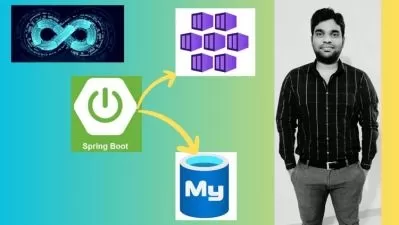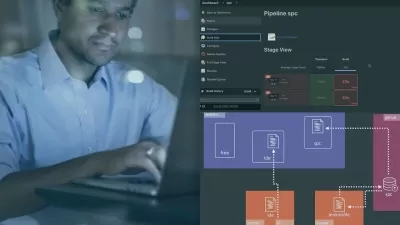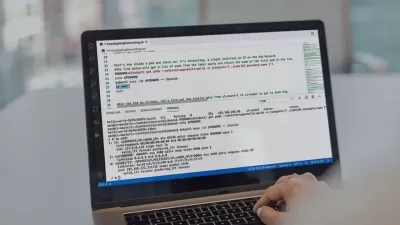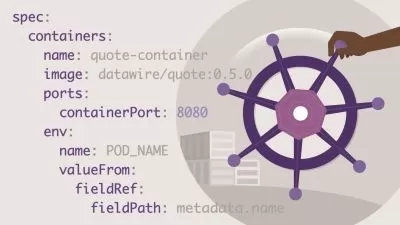Pass the CKA exam with these 100 practice questions
Benjamin Huis
3:28:17
Description
Learn Kubernetes with 100 questions
What You'll Learn?
- Cluster Architecture, Installation & Configuration: Learn how to set up and configure Kubernetes clusters like a pro.
- Workloads & Scheduling: Understand how to manage and schedule workloads efficiently within Kubernetes.
- Services & Networking: Master the art of networking and service management in a Kubernetes environment.
- Storage: Discover the best practices for handling storage in Kubernetes and ensure seamless data management.
- Troubleshooting: Develop the skills to troubleshoot common issues that may arise in a Kubernetes setup.
Who is this for?
What You Need to Know?
More details
DescriptionWelcome to the Ultimate Practical Kubernetes Course:
“Learn Kubernetes with 100 Questions.“
Are you ready to learn about Kubernetes and become a pro? Look no further! In this course, we’ll guide you through 100 hands-on practice questions that cover every aspect of working with Kubernetes. Say goodbye to boring theory and complicated guides. With our course, all you have to do is sit back, relax, and follow the instructor’s easy-to-understand steps to complete the assignments.
Become CKA Certified!
Are you aiming to achieve the prestigious Certified Kubernetes Administrator (CKA) certification? You’re in luck! Our course is an excellent preparation tool for the CKA exam and to learn Kubernetes. We have meticulously crafted practice questions that closely resemble those you’ll encounter in the exam. Moreover, we’ve gone the extra mile to create an immersive experience in our videos, simulating the real exam scenario as closely as possible.
What will you learn?
We’ve got you covered on all the essential topics to make you a Kubernetes expert:
Cluster Architecture, Installation & Configuration: Learn how to set up and configure Kubernetes clusters like a pro.
Workloads & Scheduling: Understand how to manage and schedule workloads efficiently within Kubernetes.
Services & Networking: Master the art of networking and service management in a Kubernetes environment.
Storage: Discover the best practices for handling storage in Kubernetes and ensure seamless data management.
Troubleshooting: Develop the skills to troubleshoot common issues that may arise in a Kubernetes setup.
Who this course is for:
- Students who want learn how to use Kubernetes
- Students who want to pass the CKA exam
Welcome to the Ultimate Practical Kubernetes Course:
“Learn Kubernetes with 100 Questions.“
Are you ready to learn about Kubernetes and become a pro? Look no further! In this course, we’ll guide you through 100 hands-on practice questions that cover every aspect of working with Kubernetes. Say goodbye to boring theory and complicated guides. With our course, all you have to do is sit back, relax, and follow the instructor’s easy-to-understand steps to complete the assignments.
Become CKA Certified!
Are you aiming to achieve the prestigious Certified Kubernetes Administrator (CKA) certification? You’re in luck! Our course is an excellent preparation tool for the CKA exam and to learn Kubernetes. We have meticulously crafted practice questions that closely resemble those you’ll encounter in the exam. Moreover, we’ve gone the extra mile to create an immersive experience in our videos, simulating the real exam scenario as closely as possible.
What will you learn?
We’ve got you covered on all the essential topics to make you a Kubernetes expert:
Cluster Architecture, Installation & Configuration: Learn how to set up and configure Kubernetes clusters like a pro.
Workloads & Scheduling: Understand how to manage and schedule workloads efficiently within Kubernetes.
Services & Networking: Master the art of networking and service management in a Kubernetes environment.
Storage: Discover the best practices for handling storage in Kubernetes and ensure seamless data management.
Troubleshooting: Develop the skills to troubleshoot common issues that may arise in a Kubernetes setup.
Who this course is for:
- Students who want learn how to use Kubernetes
- Students who want to pass the CKA exam
User Reviews
Rating
Benjamin Huis
Instructor's Courses
Udemy
View courses Udemy- language english
- Training sessions 100
- duration 3:28:17
- Release Date 2023/12/16

















